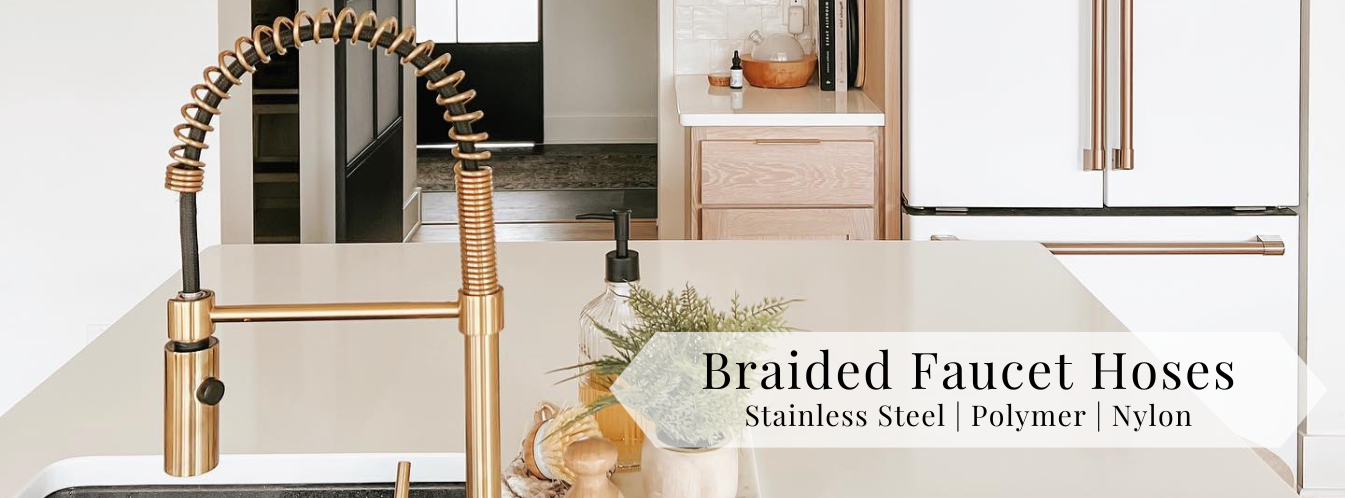Get [PRO] Pricing
Get [PRO] Pricing

When it comes to plumbing fixtures and the intricate web of components that make up our homes' plumbing systems, it's easy to overlook the seemingly minor details. Braided faucet hoses are one such component, often hidden from plain sight but the culprit for the smooth and efficient operation of your faucets.
Braided faucet hoses, also known as supply lines or water supply hoses, are the flexible, often metallic, connections between your faucet and the water supply valves. They are an integral part of your plumbing system, delivering water to your faucet while withstanding pressure, temperature changes, and other stresses. These hoses are typically made of stainless steel or braided polymer materials, providing excellent durability and flexibility.
How to Replace a Kitchen Faucet Hose
There are primarily two types of braided faucet hoses:
These are the more durable and long-lasting options. They consist of an inner hose of EPDM (ethylene propylene diene terpolymer) or PEX (cross-linked polyethylene) and an outer layer of braided stainless steel. The stainless steel layer not only protects the inner hose but also adds to the hose's strength, making it highly resistant to kinking and structural failure.
These hoses have an inner tube made of PVC, protected by a multi-filament yarn, and protected by a special polymer for optimum corrosion resistance and durability; they are less expensive than stainless steel. While polymer hoses are flexible and kink-resistant, they are less robust than their stainless steel counterparts and may have different longevity.
Your choice between these two types largely depends on your specific needs, budget, and the quality you desire for your plumbing fixtures.
Durability: Braided faucet hoses are built to last. Their robust construction, particularly in stainless steel variants, declares that they can withstand the test of time, preventing leaks and water damage.
Flexibility: These hoses are flexible, making them easy to install and manipulate. Their flexibility is especially useful when you need to work in tight spaces.
Corrosion Resistance: Polymer braided hoses are highly corrosion-resistant, and the inner liners are fabricated from PVC, ensuring your water supply remains clean and uncontaminated.
Leak Prevention: Properly installed braided hoses significantly reduce the risk of leaks, which can lead to costly repairs and water wastage.
Temperature Resistance: They can handle hot and cold water, which is valuable for different applications in the kitchen.
While braided faucet hoses are durable, they are not invincible. Regular maintenance and care can extend their lifespan and keep your plumbing system in excellent working condition. Periodically inspect your hoses for any signs of leakage. Even a minor leak can worsen over time, leading to water damage. Make sure the connections at both ends of the hose are properly tightened. Over time, these connections can become loose, causing leaks. If you notice any visible damage, such as cracks or kinks, or if the hose is more than a few years old, it's a good idea to replace it. Sediment buildup can occur within the hoses, affecting water flow. Remove and clean them if you notice reduced water pressure.
Braided faucet hoses might be small components, but they are undeniably significant in your plumbing system. Their durability, flexibility, and resistance to corrosion make them a smart choice for your home. Understanding their importance and giving them the care and attention they deserve can prepare your plumbing fixtures to continue to deliver clean and reliable water for years to come.